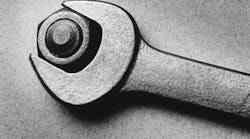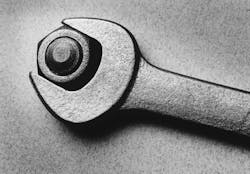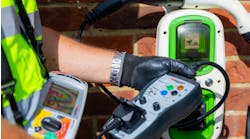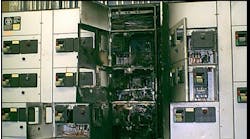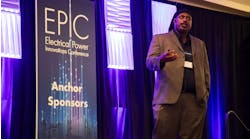In business, some people succeed only because they have good connections. Same in politics. In fact, good connections are important in many fields. In electrical work, good connections are also vitally important. But we’re looking at a different kind of connection, one that often involves threaded components such as bolts or screws.
Traditionally, the way to assess whether a threaded connection is good was to “make sure it’s tight” by turning the fastener(s). In many facilities, the preventive maintenance procedures call for “tightening” terminal screws in panels. The intention is to ensure a good connection, but the effect is usually the opposite.
The practice of “giving it another quarter turn” often causes connections to fail because it stretches the fasteners beyond their elastic limits. What gives the fasteners the clamping power that provides a reliable connection is stretching them almost to that limit. This limit is the basis for torque specifications.
When you first assemble a connection, tightening to the recommended torque is a major factor in ensuring that you get a reliable connection. Once that bolt or screw is tightened to that torque value, randomly tightening it further “in case it’s loose” will reduce the clamping power of that fastener.
But if you’re not tightening these, how can you ensure they are tight enough? What if you back off and then retorque to the recommended value? Sorry, that doesn’t work either. It’s a one-shot deal when you assemble threaded fasteners. They may hold OK when re-used, if you add a locking device (e.g, a star washer), but the pressure of the connection will be reduced (typically 50%). That situation is not good when current must flow through the connection.
The easiest way to check a large number of connections is to use a thermographic camera. If you set the camera correctly, you will spot weak connections because they will present a higher resistance than good connections and thus throw off heat that the camera will pick up in contrast to the surrounding objects.
What if the system is down? If you don’t have current flowing, then thermography isn’t going to reveal the weak connections. You can check across them one at a time using a low resistance meter (or you can energize that portion of the system to permit the use of thermography).
If you don’t have a thermographic camera and the system is running, you still can find loose connections via the loss evaluation method. This is a time-consuming process: calculating the voltage drop for each run, then measuring the actual voltage at each end. If you subtract the voltage drop value from the supply voltage value, that’s the value you should see at the other end if you have zero losses. In reality, you will always have some losses. If the losses are more than a few percent of the supply voltage, suspect bad connections in that run. All you have to do at that point is replace them all....
Of these three methods, thermography is the most efficient. The last one is costly and wasteful. The second one isn’t so great, either. Yes, you can check hot connections with a low resistance meter to verify that a connection is bad. But you really don’t have the time to individually check every connection in the plant, unless your plant has long shutdowns and an outsized maintenance budget.
A good visual inspection for corrosion, discoloration, and gross defects also is useful. But if the system is energized and you’re going to open panels to do that inspection, you may as well do a thermographic scan while you’re there so you can find all the bad connections rather than a few super-duds.
